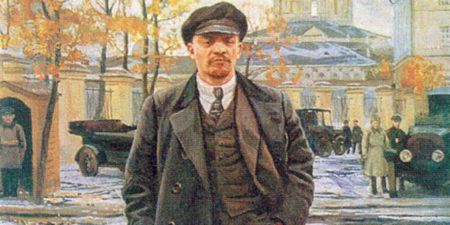Readers hardly need an intro to V.I. Lenin. To this day, he’s still a hero to the Marxist-Leninist left. Why? He defeated Russian capitalism, founded the Soviet Union, and guided revolutionary movements around the globe. And to most anarchists, he’s still a villain. Why? He broke Russian anarchism and turned communism into an authoritarian ideology.
I’m not going to wade too heavily into that debate. I’ll take a more modest aim here. Recently I started reading the Essential Works of Lenin. From that collection, I’ll say a few things about Lenin’s short book ‘What Is to Be Done?‘
While much of the material looks at the specific situation in Russia, I think we can learn a few things from it. Even things we can apply in the 2020s. Lenin can teach us a number of things about both good activism and what to avoid.
What Is to Be Done?
‘What Is to Be Done?’ concerns an internal debate among Russian Social Democrats. Before readers pummel me for calling Lenin a Social Democrat, let me point out that this is what Russian socialists called themselves at the time. The term only took on its flipped sense (i.e., to refer to a political space between capitalism and socialism) much later. Anyway, Russians disagreed on how to proceed to the next phases. Lenin intervened.
According to Lenin, his rivals wanted to focus on trade union activity. They wanted to build up the party by helping workers fight their bosses. And they assumed class consciousness would arise directly from trade union activity.
By contrast, Lenin thought trade union activity alone came up well short of the mark. He wanted to focus broadly on all political issues that could engage workers. He thought the party should have a message on each of these issues. And he thought the party should take a pastoral role of educating workers on the party line.
Revolutionary Organizations
These disputes moved over into core organizing. Lenin argued that trade union activity alone led to too open and democratic an org. In the authoritarian environment of Tsarist Russia, Lenin found it important for a small core of intellectuals to set the agenda and keep it secret.
On Lenin’s view, this vanguard would serve as professional revolutionaries. But Lenin remained coy about whether the line of thought generalizes from Tsarist Russia to more democratic states. At times, he appears to argue that communist movements should embrace a vanguard elsewhere. While at other times, he appears to argue for a vanguard only within specific contexts, like those of Russia.
Needless to say, this became a key point of dispute in communist movements the world over.
But I think the key point here is that, for Lenin, an intellectual core would guide the org and provide political education. The vanguard teaches the workers proper theory and activist methods. While attractive in some ways, this view leads easily to extreme paternalism of the sort depicted in, say, Ralph Ellison’s Invisible Man.
Lenin’s Argument Style
Lenin’s actual style of argument lands a bit all over the place. In his argument against open democracy and in favor of an authoritarian style of org, he mostly chips away at the notion of ‘freedom of criticism’ within activist orgs. He does so largely by building on Marx’s arguments on the ‘rights of man.’ He also points to how certain factions within the left use ‘freedom of criticism’ as a way to introduce bad ideas.
That all goes well enough. But then Lenin moves heavily into fallacy territory, especially the ad hominem space. He performs all kinds of moves of guilt by association. In one especially bad case, he links trade unionists to terrorists.
Lenin At His Best
And so, I find some things we can learn from Lenin in ‘What Is to Be Done?’ He’s at his best when he criticizes some of the more foolish tactics of naive leftists. He hammers away at the idea that class consciousness will ‘spontaneously’ arise among the masses without deeper organizing.
Lenin’s right about that. And we can find this kind of magical thinking on the left to this very day. But Lenin thinks direction must come from the outside. The vanguard feeds it to the working class by. But that, however, stands out as a bit too hasty a conclusion.
Lenin At His Worst
Getting at Lenin’s basic argument, his key mistake is that he adopts a false dichotomy. On Lenin’s view, class consciousness either comes about spontaneously or from a vanguard. And since it’s not the former (which Lenin is right about), then it must be the latter (which Lenin is wrong about).
Why is Lenin wrong here? There are more than two alternatives. At least in more democratic societies, Lenin never says why workers can’t form their own political education groups through open processes. There’s not much reason to believe it needs to be the role of specialists.
I need hardly mention again, of course, some of Lenin’s fallacious arguments. Those are truly Lenin at his very worst.
